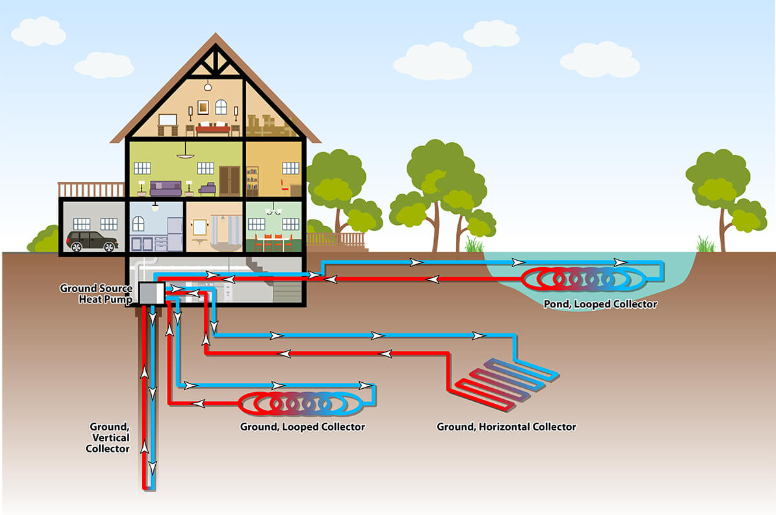Geothermal
Geothermal heat pump systems operate very similarly to conventional heat pumps, but instead of utilizing outside temperatures, geothermal uses heat transfer through the ground. Please watch the 2-minute video below from the US Department of Energy for more information.
Geothermal Explanation Video USDE
Geothermal in West Virginia
West Virginia is quickly becoming known for its geothermal energy potential in the eastern United States. Thanks to the recent boom in oil and gas drilling, geothermal temperature data collected by drilling companies can now be analyzed for geothermal potential. The data shows that West Virginia is a hotspot for geothermal energy and has temperatures at depths comparable to large geothermal producers out west. To see the expected temperature and depth for your specific area, please use the interactive map from WVGES linked below,

Geothermal for Historic Property HVAC
There are pros and cons to be considered when looking at geothermal as a potential option for historic property HVAC:
Pros
Preserves the aesthetics of the historic property as geothermal systems have minimal above-ground equipment.
High energy efficiency. Geothermal heat pump systems have the potential to be 2x as efficient as top of the line air conditioners and 50% more efficient than the top of the line gas furnaces.
Can cut a property’s heating and cooling bill by 30-70%
Geothermal systems have exceptional durability, with lifespans of upwards of 50+ years for ground loop systems and 25 years for the indoor components.
For property owners committed to sustainability and environmental responsibility geothermal energy is an ideal choice as it utilizes a renewable energy source.
Cons
Requires the right property conditions for installation and land availability depending on the system.
Geothermal heat pumps in West Virginia would likely need a supplementary form of heat for the coldest days requiring a backup source of heat to be available.
Large up front cost due to the nature of the installation.
Contractors
North Central, WV
Central, WV

